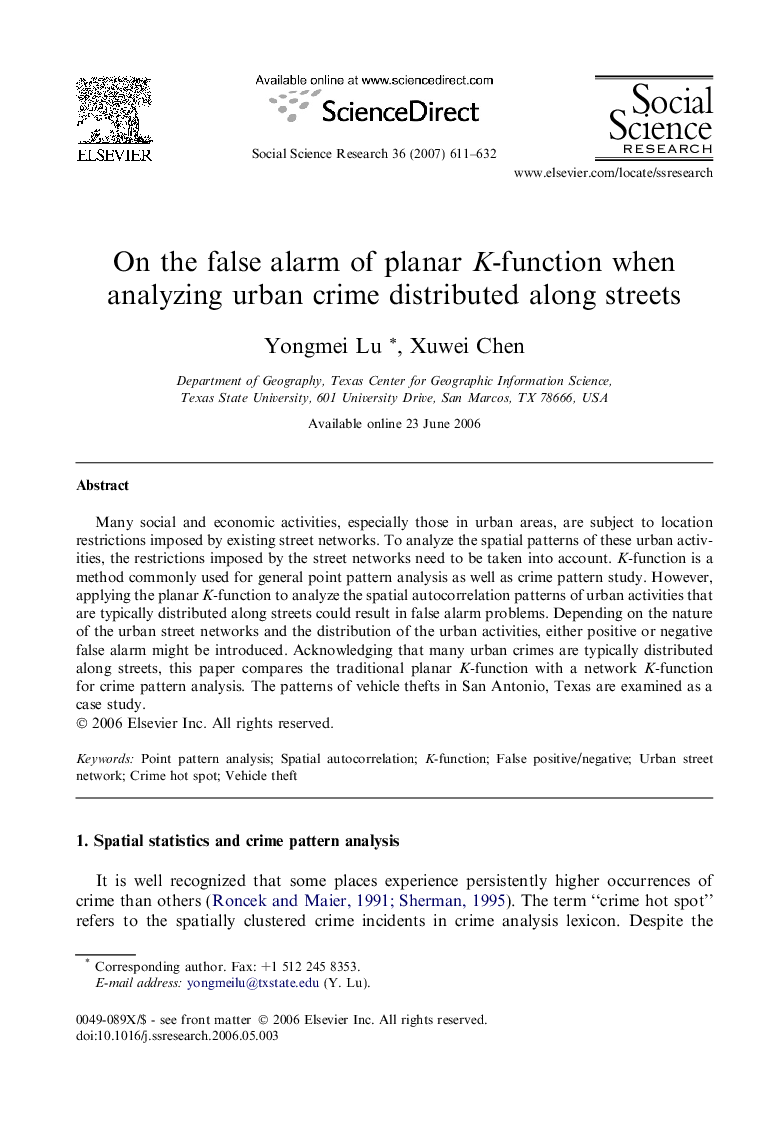| Article ID | Journal | Published Year | Pages | File Type |
|---|---|---|---|---|
| 956349 | Social Science Research | 2007 | 22 Pages |
Many social and economic activities, especially those in urban areas, are subject to location restrictions imposed by existing street networks. To analyze the spatial patterns of these urban activities, the restrictions imposed by the street networks need to be taken into account. K-function is a method commonly used for general point pattern analysis as well as crime pattern study. However, applying the planar K-function to analyze the spatial autocorrelation patterns of urban activities that are typically distributed along streets could result in false alarm problems. Depending on the nature of the urban street networks and the distribution of the urban activities, either positive or negative false alarm might be introduced. Acknowledging that many urban crimes are typically distributed along streets, this paper compares the traditional planar K-function with a network K-function for crime pattern analysis. The patterns of vehicle thefts in San Antonio, Texas are examined as a case study.
